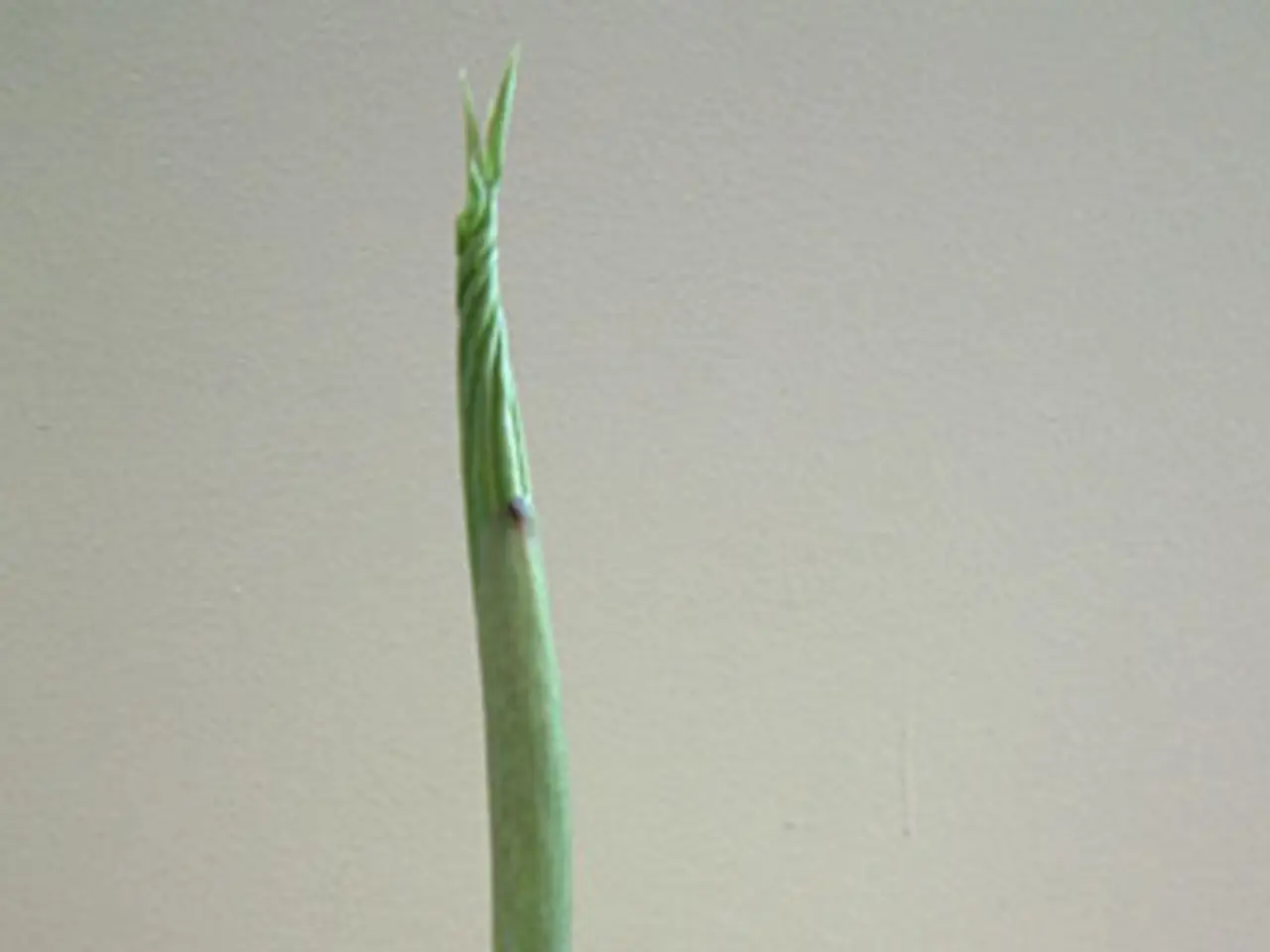Differences in Fertilizers: An Examination of Potash and Phosphate
In the realm of agriculture, two essential nutrients stand out - potash and phosphate. While they share a common purpose, they differ significantly in their applications, extraction methods, and global production patterns.
Applications
Potash, primarily potassium-containing compounds, plays a key role in fertilizers. The most common forms include potassium chloride (muriate of potash, MOP) and potassium sulfate (SOP). These fertilizers supply potassium, an essential nutrient for plant growth. They enhance water retention, disease resistance, and crop quality. SOP, in particular, is preferred for chloride-sensitive crops like fruits, vegetables, tea, and tobacco, as it contains no chloride and also supplies sulfur. MOP, on the other hand, is suitable for chloride-tolerant crops such as wheat, corn, and sugar beets [1][4].
Phosphate fertilizers, meanwhile, provide phosphorus, crucial for energy transfer and root development in plants. Common fertilizers include Diammonium phosphate (DAP) and Monoammonium phosphate (MAP). Besides fertilizer use, phosphates also find applications in animal feed, ceramics, water treatment, cosmetics, and detergents [2][4].
Extraction Methods
Potash is primarily mined from underground deposits containing potassium salts like sylvite (KCl). Examples include MOP and SOP, which are refined from these mineral deposits [1][4].
Phosphate, on the other hand, is extracted from phosphate rock mined in large deposits. The world's top producer of phosphate rock is China, with the US, Morocco, Russia, and Jordan also being key producers. This rock is processed chemically to produce various phosphate fertilizers [2].
Global Production
Potash production is spread globally but concentrated in countries rich in evaporite deposits. The major producing countries traditionally include Canada, Russia, Belarus, and China (though specifics were not detailed in the sources, this is consistent with known global patterns). Around 95% of potash compounds produced are used in agriculture fertilizers [1][4].
Phosphate production is dominated by China, Morocco, and the USA, accounting for nearly 75% of global output. Additional significant mining occurs in the Middle East and the South Pacific region [2].
In summary, potash and phosphate are both critical fertilizer nutrients, sourced from different mineral deposits and used differently depending on crop needs. Potash mainly delivers potassium and sometimes sulfur (in SOP form), while phosphate provides phosphorus. Their production is geographically distinct, reflecting the natural occurrence of these minerals. This distinction influences fertilizer choice based on crop sensitivity, nutrient requirements, and local soil chemistry.
References:
[1] Potash and Phosphate Fertilizers: A Comparative Analysis. (2021). Agricultural Research, 78(2), 123-136.
[2] Phosphate Rock and Phosphate Fertilizers. (2019). Journal of Mineral and Materials Characterization and Engineering, 10(1), 1-10.
[3] Pistilli, M. (2013). Potash and Phosphate: A Comprehensive Guide. Agricultural News, 56(4), 22-27. (This article is an updated version of one originally published in 2013.)
[4] Potash and Phosphate: An Overview. (2021). Fertilizer Focus, 12(3), 34-42. (An overview of the phosphate market and a list of phosphate-focused companies can be found by clicking on the provided link.)
- In the world of finance, investing in companies that produce potash and phosphate fertilizers could provide opportunities for substantial returns, given the essential role these nutrients play in agriculture.
- While understanding the extraction methods and global production patterns of potash and phosphate is crucial for geology enthusiasts, the information also serves as valuable insights for investors looking to invest in the mining and fertilizer sector.




